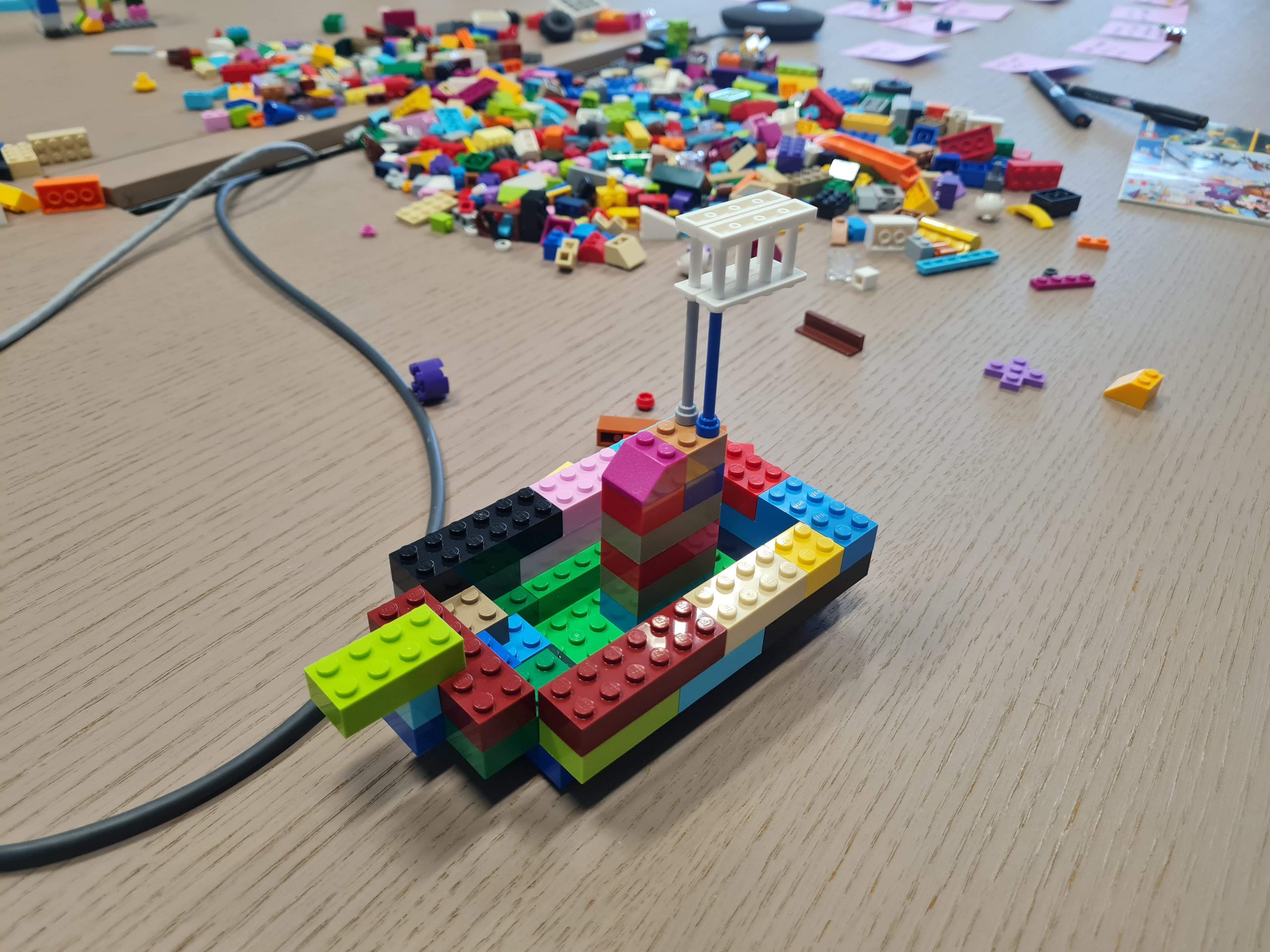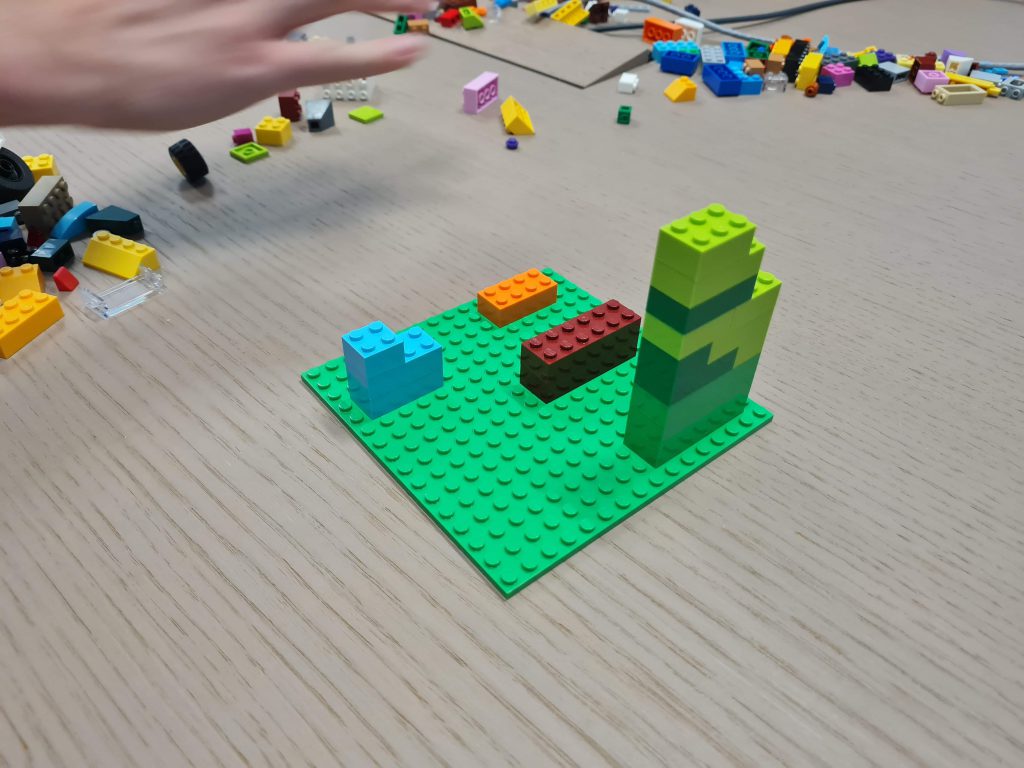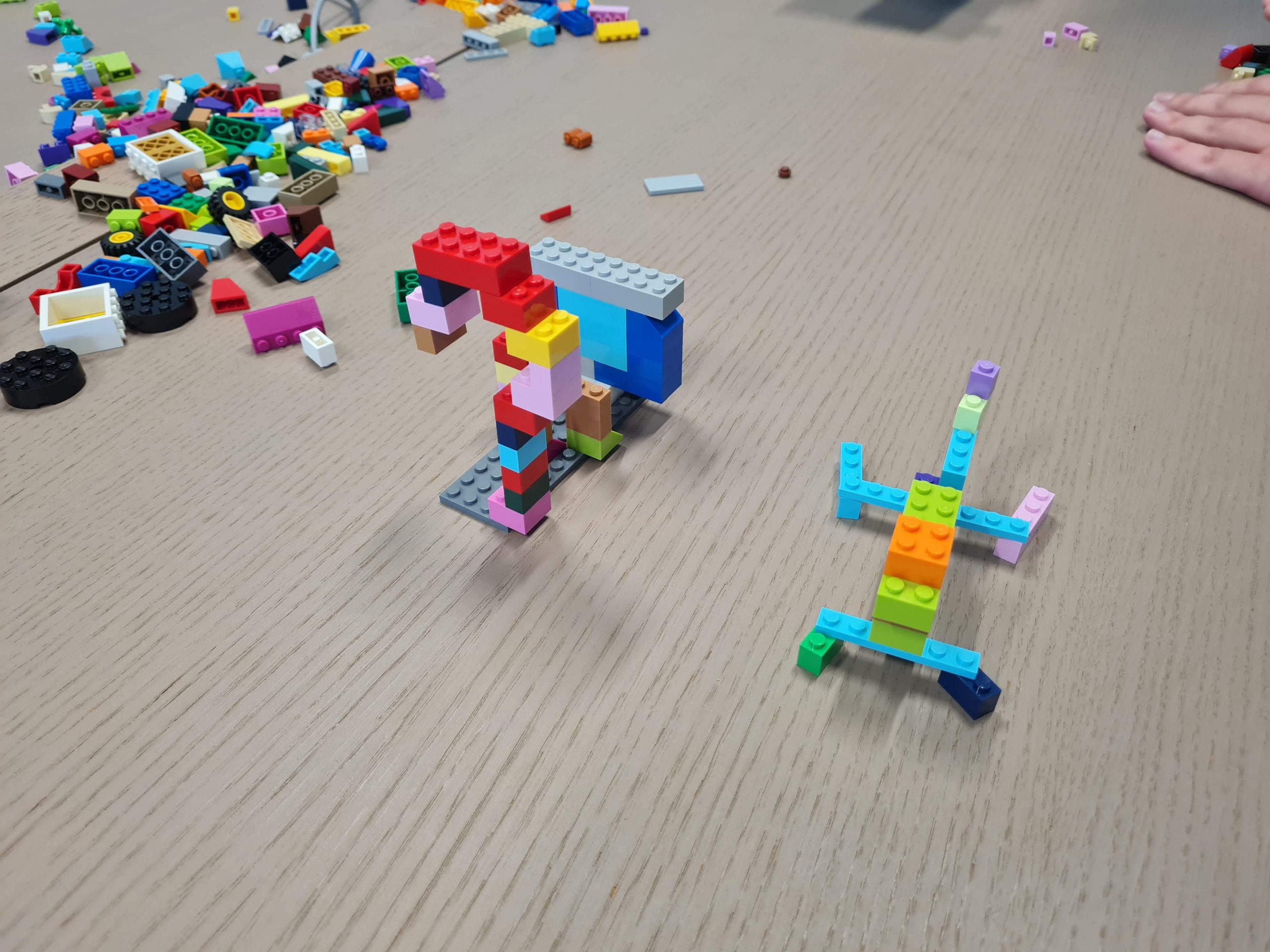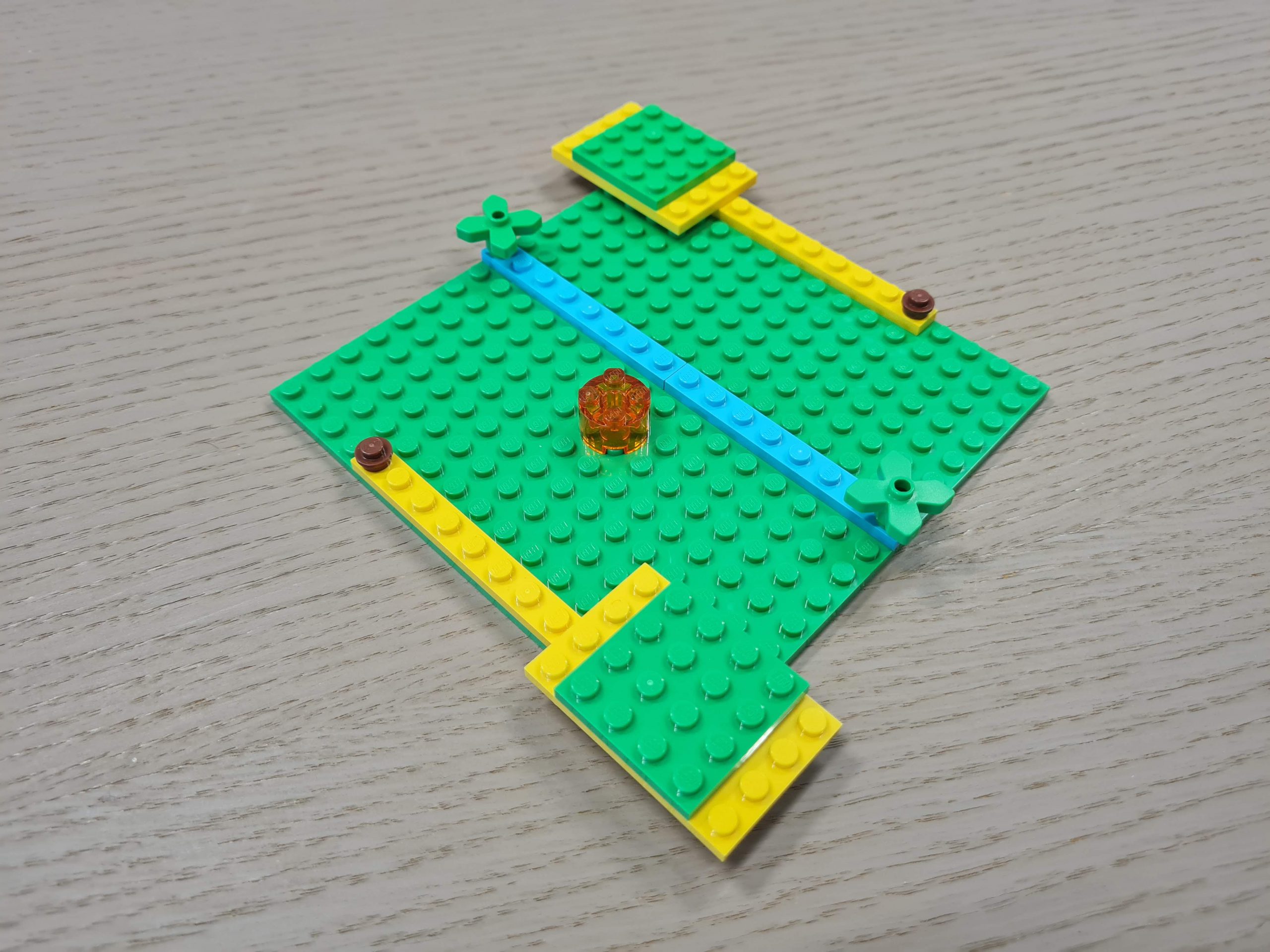Retro recipe
Lego

Today we are cooking with Legos. Activate the creative parts of your team's brain by letting them use their hands on something else than a keyboard for a change. Adaptions for remote and hybrid (we did it hybrid) can be found at the bottom.
Ingredients
- Lego (We used three Large Creative Brick Boxes for 9 people and had more than enough bricks)
- Table
- Absence of chairs
- Sticky notes
- Marker
Mise en place
Hardly any preparation is required.
- Make sure you put your boxes of Lego on the table but don't open them yet.
- Put away any chairs.
- Place your sticky notes and marker on the table.
Cooking
Step 1: Welcome
Welcome everyone around the table. We didn't think a warm-up was necessary for this retrospective, seeing how people had been curious about what the Lego was for all week and therefore already had a growth mindset upon entering the room, ready to "play" and experiment. So let them!
Step 2: Purpose (2 minutes)
Explain how it is everyone's mission to build their own version of the past Sprint with Lego bricks. The good, the bad, the obstacles the team encountered, the moments of pure joy and satisfaction because of their work, etc. The purpose of this is to adapt and continuously improve the way the team delivers value.
Step 3: Start building (10~15 minutes)
The first objective is to build the last Sprint, individually, with two rules to follow:
1. Don't talk.
2. Start building immediately.
Now you can give the go-sign and let them empty out the Lego Brick Boxes over the table. The clattering of bricks should signal whether the start-building-immediately-rule is being respected!
Everyone stops building once 10 to 15 minutes have passed.
Step 4: Present or actively listen (5~10 minutes per participant)
One by one, the people present their Lego masterpiece while the others actively listen so that they can ask follow-up questions. In the meanwhile, the facilitator writes down the topics that are mentioned on a sticky note and sticks them to the wall (one topic per sticky note).
Encourage the team to ask neutral follow-up questions. Avoid leading questions.
Do:
"Does the color of this brick have a double meaning?"
Don't:
"Does this red brick mean you are unhappy about the Sprint?".
Do:
"What direction is this Lego man walking in?"
Don't:
"Is this Lego man walking towards value or away from it?".
By limiting ourselves to neutral follow-up questions, we make sure the presenter remains in charge of the meaning behind their individual creation. At times you may get the reply that a certain building choice has no meaning at all, and that is perfectly fine too.
Step 5: Key takeaways and action points (last 15 minutes of the retrospective)
By now, you will have gotten a general idea of the engaged team's thoughts, feelings, and ideas about the past Sprint; and possibly even more! If your facilitator did a good job you'll see that overview reflected on the wall, now full of sticky notes listing the different topics that were mentioned.
Ask everyone to gather around the wall and give them a marker. Instruct them to add a total of two dots to the sticky notes, one per note, based on what they feel the team should prioritize and work on first.
We limited ourselves to only committing to two actions out of a wall of thirty possible actions. Better to focus on a few and get them done.




Final impressions
If you followed the steps above, by now you should have experienced a flavorful retrospective with tangible outcome towards continuous improvement. Just like all the retro recipes, this one came from our own experience here at Skyline Communications and this is what worked for us. This is a matter of taste, so feel free to change the ingredients and cooking steps to whatever flavor you prefer.
I wouldn't recommend this retro recipe to people who "don't see the point of a retrospective meeting" as a first endeavor. It might come across as too much play and not enough serious work.
Our only recommendation is to stick to the two rules: don't talk, and start building immediately; the former to make sure everyone is allowed to reflect for themselves without getting influenced by others, the latter to let your thoughts emerge while building. In the end, it's not about what you create but about the meaning you give the bricks during the presentation.
Remote or hybrid adaptions
This recipe can also be done remotely. We tried this out in a hybrid setting where 9 people were in the office and 4 people joined remotely.
Some extra ingredients you'll need:
- A videocall setup
- Lego at home (recommended)
- Or an online Lego platform, e.g. https://www.mecabricks.com/en/workshop (difficult for first timers)
We even had one colleague use Duplo, which made it even more funny but still got the job done.
Make sure to show your creation to the camera and spin it around a couple of times so everyone can clearly see what you have built.
